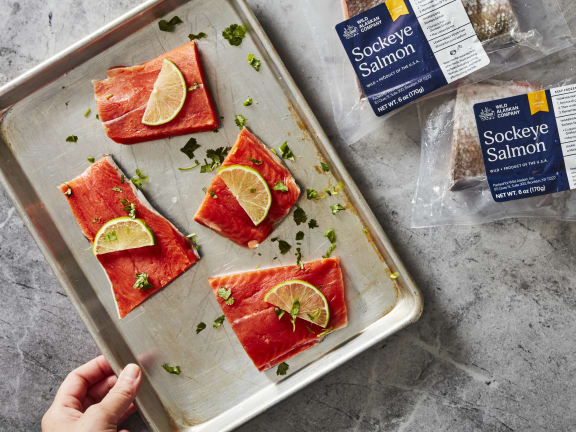If the idea of frozen fish elicits memories of dried out freezer fish sticks, we are here to tell you times have changed. Freezing fish has become the norm for wild-caught seafood, so much so that in Alaska specifically, they've spent years perfecting the timing and process for how to freeze fish at the peak of freshness, usually within minutes or hours, not days of catching. Plus, unless you live in a maritime community, fresh fish is often not as fresh as it seems.
What's the difference in quality between fresh and frozen fish?
That depends on what you mean by fresh. A lot of the “fresh” fish at local stores has actually been previously frozen, and thawed to make it appear "fresh." A quick glance at the label will often show "thawed from previously frozen."
If the fish at your local store has been previously frozen and thawed — and you may be surprised at how much of it is — every hour and day it spends thawed means there’s deterioration in the proteins and lipids of the fish - giving it that “fishy” smell.
Think about it, it could be spending one to three days in the display case and then one to three days in your fridge before you actually eat it. Freezing fish is fins down the best way to preserve quality if you're not going to eat it within a few hours of catching.
Pro-buying tip: If you’re not sure how long the fish has been thawed, or the day it was caught, buy a high-quality frozen fish instead of a “previously frozen” thawed piece.
Learn more about how Wild Alaskan Company fish is preserved at the peak of freshness until you're ready to cook:
*A few of our select offerings, such as our smoked products, Snap-and-Eat Snow Crab, Snap-and-Eat Dungeness Crab, and Ground Sockeye Salmon must be thawed in order to be processed.
Wild Alaskan Company delivers wild-caught, sustainable seafood directly to your door. Get Started.







